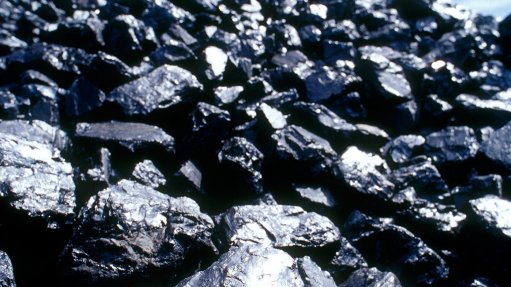
FUELLING THE ECONOMY Coal exports generate about R50-billion for the South African economy each year
Coal will remain the primary source of South Africa’s power generation for the foreseeable future; however, the country’s recoverable coal reserves of about 60-billion tons must be optimally used and managed to ensure the country receives maximum benefit from these reserves, states local scientific and technology research, development and implementation organisation the Council for Scientific and Industrial Research researcher Johan de Korte.
He notes that, currently, South Africa produces about 261-million tons of coal a year, of which about 130-million tons is used by State-owned power utility Eskom in its coal-fired power stations, 40-million tons is used by South African energy and chemicals group Sasol at its operations and about 71-million tons is exported.
De Korte points out that coal exports generate about R50-billion for the South African economy each year.
However, he says the current low coal export price, averaging between $60/t and $50/t, places miners under significant cost pressures and prices are only expected to start rising again from 2017.
Additionally, De Korte says that coal reserves in South Africa’s central coal basin, which comprises eMalahleni (formerly Witbank), the Highveld, Ermelo and the South Rand coalfields, is expected to start depleting by around 2040.
Nonetheless, he stresses that not all the mines in the central coal basin will be closed by 2040 but that the larger coal mines in the area will almost certainly have closed by then.
“This obviously means that we need to start looking for coal in other areas, and the Waterberg coalfields, in Limpopo, which extends into Botswana, is among the areas where there are high expectations for new coal reserves to be found.”
De Korte states that coal has also been discovered in other parts of Limpopo, such as the Springbok Flats coalfields. However, he says all these prospective coalfields will be challenging to mine and process owing to the low-quality grade of the coal in these areas.
Therefore, De Korte says, a large proportion of the coal that is eventually mined from these new sources will require extensive processing to maintain the qualities required by industry.
Further, he highlights that South Africa has to balance exports with inland demand and also ensure the security of the country’s coal supply to Eskom in the long term.
De Korte points out that the Medupi and Kusile coal-fired power stations, in Limpopo and Mpumalanga respectively, will require an additional 30-million tons of coal a year, while Sasol is expected to continue to require about 40-million tons of coal a year for its operations.
“Therefore, South African coal miners, traders and government authorities will have to work together to ensure that the needs of the country can be balanced with those of the export market, which is a critical source of revenue generation and job creation for South Africa,” he concludes.
De Korte was a speaker at the Fossil Fuel Foundation’s Independent Power Generation workshop, which took place in Johannesburg in July.